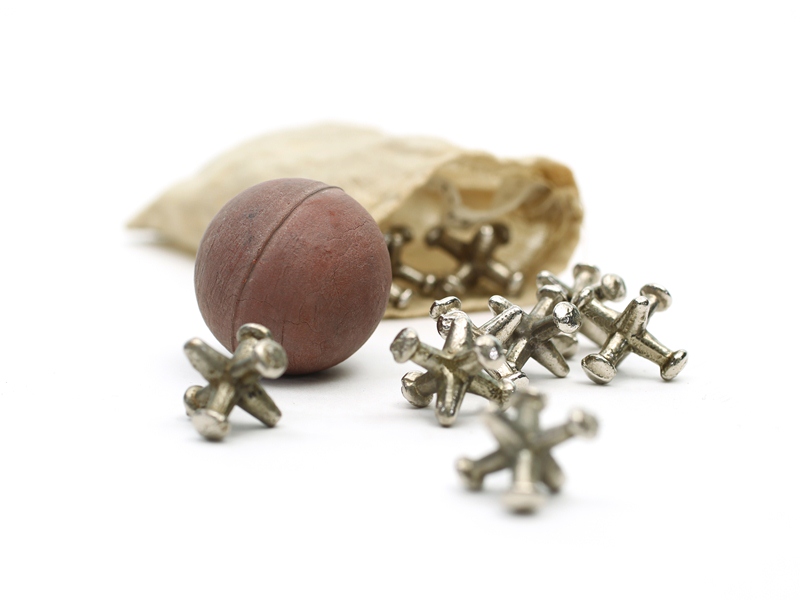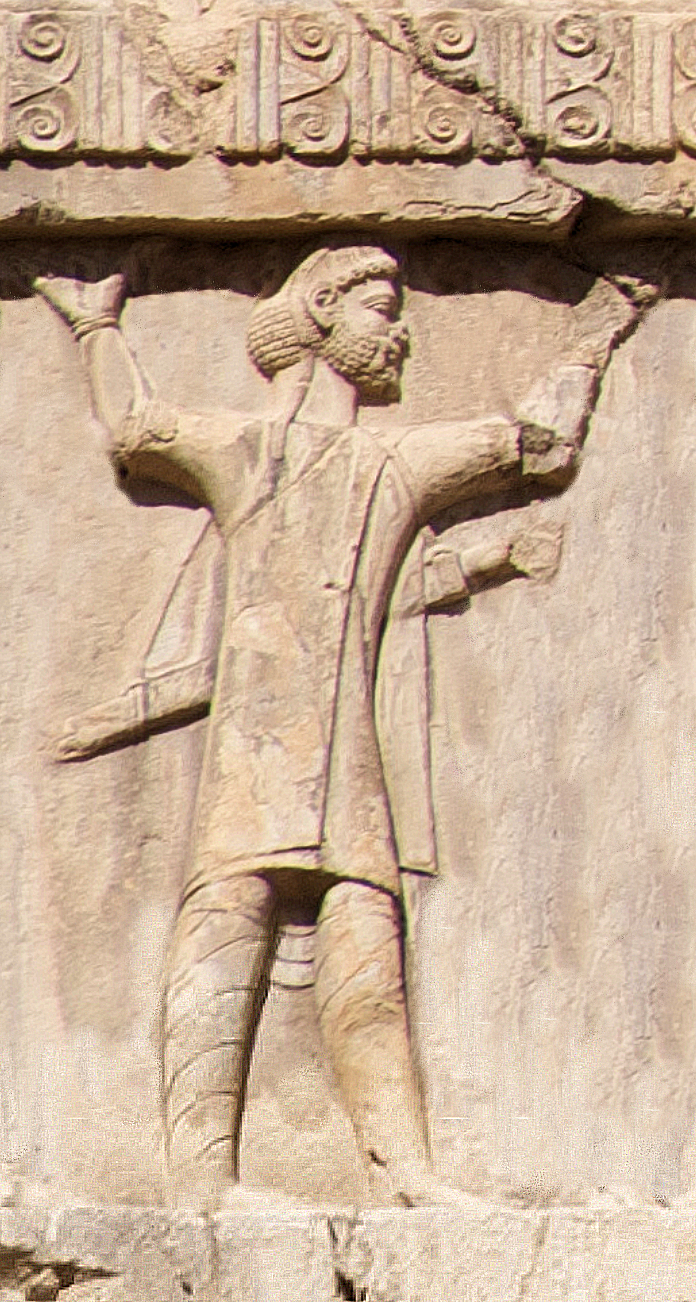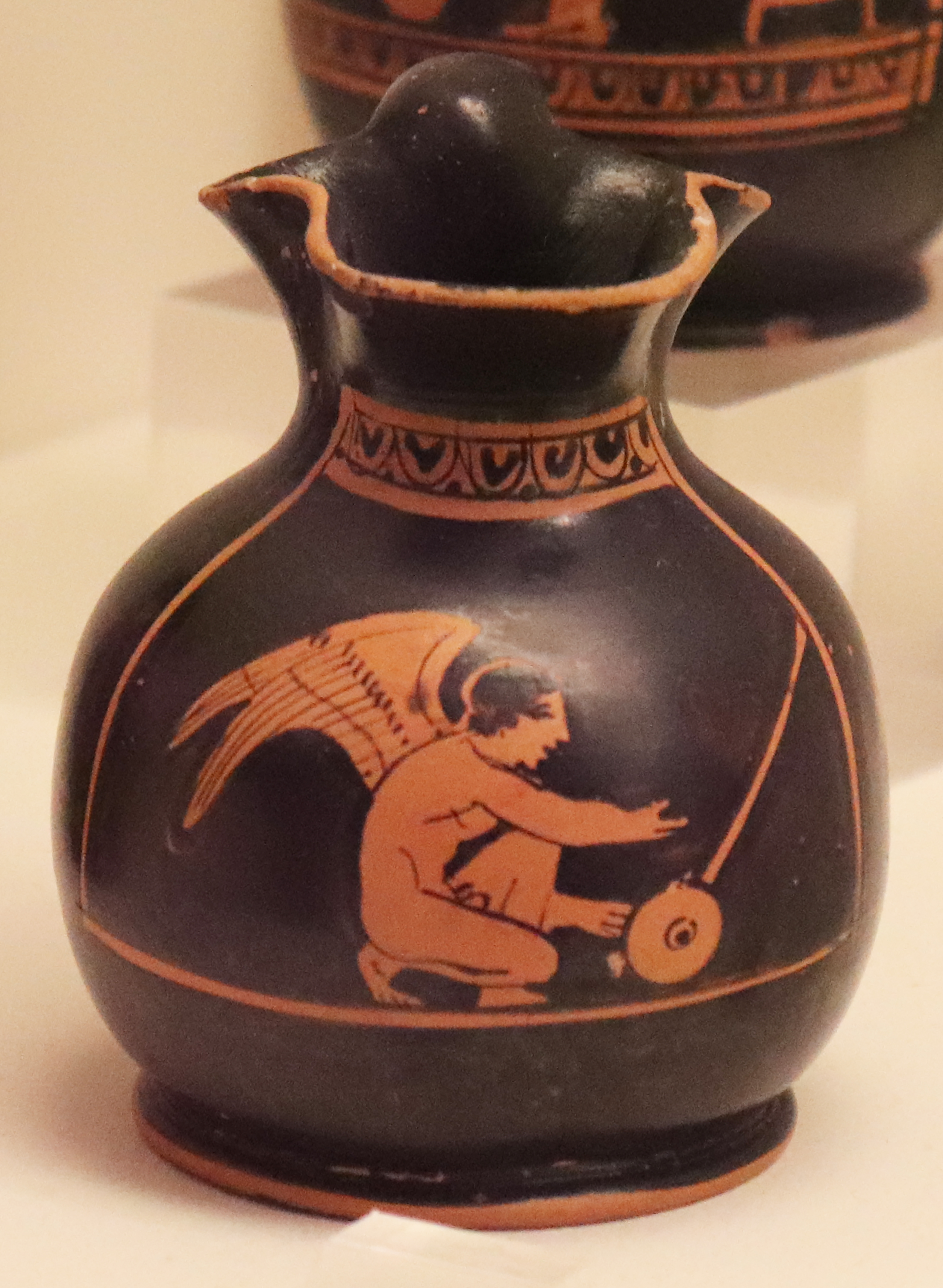|
Knucklebones
Knucklebones, also known as scatter jacks, snobs, astragaloi (''singular'': astragalus), tali, dibs, fivestones, jacks, jackstones, or jinks, among many other names, is a game of Fine motor skill, dexterity played with a number of small objects that are thrown up, caught, and manipulated in various manners. It is ancient in origin and is found in various cultures worldwide. The name "knucklebones" is derived from the Ancient Greece, Ancient Greek version of the game, which uses the Talus bone, astragalus (a bone in the ankle, or hock (anatomy), hock) of a sheep. However, different variants of the game from various cultures use other objects, including stones, seashells, seeds, and cubes. Modern knucklebones consist of six points, or knobs, projecting from a common base and are usually made of metal or plastic. The winner is the first player to successfully complete a prescribed series of throws, which, though similar, differ widely in detail. The simplest throw consists in ei ... [...More Info...] [...Related Items...] OR: [Wikipedia] [Google] [Baidu] |
Dice
A die (: dice, sometimes also used as ) is a small, throwable object with marked sides that can rest in multiple positions. Dice are used for generating random values, commonly as part of tabletop games, including dice games, board games, role-playing games, and games of chance. A traditional die is a cube with each of its six faces marked with a different number of dots ( pips) from one to six. When thrown or rolled, the die comes to rest showing a random integer from one to six on its upper surface, with each value being equally likely. Dice may also have other polyhedral or irregular shapes, may have faces marked with numerals or symbols instead of pips and may have their numbers carved out from the material of the dice instead of marked on it. Loaded dice are specifically designed or modified to favor some results over others, for cheating or entertainment purposes. History Dice have been used since before recorded history, and their origin is uncertain. It is hypoth ... [...More Info...] [...Related Items...] OR: [Wikipedia] [Google] [Baidu] |
Game Of Chance
A game of chance is in contrast with a game of skill. It is a game whose outcome is strongly influenced by some randomizing device. Common devices used include dice, spinning tops, playing cards, roulette wheels, numbered balls, or in the case of digital games random number generators. A game of chance may be played as gambling if players wager money or anything of monetary value. Alternatively, a game of skill is one in which the outcome is determined mainly by mental or physical skill, rather than chance. While a game of chance may have some skill element to it, chance generally plays a greater role in determining its outcome. A game of skill may also may have elements of chance, but skill plays a greater role in determining its outcome. Gambling is known in nearly all human societies, even though many have passed laws restricting it. Early people used the knucklebones of sheep as dice. Some people develop a psychological addiction to gambling and will risk food and sh ... [...More Info...] [...Related Items...] OR: [Wikipedia] [Google] [Baidu] |
Ganymede (mythology)
In Greek mythology, Ganymede ( ) or Ganymedes ( ; ) is a Greek hero, divine hero whose homeland was Troy. Homer describes Ganymede as the most handsome of mortals and tells the story of how he was abducted by the gods to serve as Zeus's cup-bearer in Mount Olympus, Olympus. The Latin form of the name was (and also "Ganymedes"), from which the English word ''catamite'' is derived. The earliest forms of the myth have no erotic content, but by the 5th century BCE it was believed that Zeus had a sexual passion for him. Socrates says that Zeus was in love with Ganymede, called "desire" in Plato's ''Phaedrus (dialogue), Phaedrus''; but in Xenophon's ''Symposium (Xenophon), Symposium'', Socrates argues Zeus loved him for his mind and their relationship was not sexual. By the early modern period, the event was termed a "rape" with little distinction from equivalent female abductees like Io (mythology), Io, Europa (mythology), Europa, or Callisto (mythology), Callisto. According to Di ... [...More Info...] [...Related Items...] OR: [Wikipedia] [Google] [Baidu] |
Atys Of Lydia
Atys (Ancient Greek: Ἄτυς) is a legendary figure of the 2nd millennium BC who is attested by Herodotus to have been an early king of Lydia, then probably known as Maeonia. He was the son of Manes and the father of Lydus, after whom the Lydian people were later named. Herodotus recounts that Maeonia was beset by severe famine during Atys' reign. To help them endure hunger, the Maeonians developed various expedients including dice, knucklebones and ball games. The idea was that they would eat every other day only. On the interim days when they fasted, they would play games all day to distract their minds from hunger. Herodotus says they lived like that for eighteen years. Eventually, Atys decided to halve the population, one half to remain in Maeonia and the other half to leave and found a colony elsewhere. Lots were drawn and Atys appointed himself to stay while one of his sons, Tyrrhenus, led the colonists to Umbria where they settled and became known as Tyrrhenians. The ... [...More Info...] [...Related Items...] OR: [Wikipedia] [Google] [Baidu] |
Talus Bone
The talus (; Latin for ankle or ankle bone; : tali), talus bone, astragalus (), or ankle bone is one of the group of Foot#Structure, foot bones known as the tarsus (skeleton), tarsus. The tarsus forms the lower part of the ankle joint. It transmits the entire weight of the body from the lower legs to the foot.Platzer (2004), p 216 The talus has joints with the two bones of the lower leg, the tibia and thinner fibula. These leg bones have two prominences (the Lateral malleolus, lateral and Medial malleolus, medial malleoli) that articulation (anatomy), articulate with the talus. At the foot end, within the tarsus, the talus articulates with the calcaneus (heel bone) below, and with the curved navicular bone in front; together, these foot articulations form the Ball-and-socket joint, ball-and-socket-shaped talocalcaneonavicular joint. The talus is the second largest of the Tarsus (skeleton), tarsal bones; it is also one of the bones in the human body with the highest percentage of i ... [...More Info...] [...Related Items...] OR: [Wikipedia] [Google] [Baidu] |
Lydians
The Lydians (Greek language, Greek: Λυδοί; known as ''Sparda'' to the Achaemenids, Old Persian cuneiform Wikt:𐎿𐎱𐎼𐎭, 𐎿𐎱𐎼𐎭) were an Anatolians, Anatolian people living in Lydia, a region in western Anatolia, who spoke the distinctive Lydian language, an Indo-European languages, Indo-European language of the Anatolian languages, Anatolian group. Questions raised regarding their origins, reaching well into the 2nd millennium BC, continue to be debated by language historians and archeologists. A distinct Lydian culture lasted, in all probability, until at least shortly before the Common Era, having been attested the last time among extant records by Strabo in Kibyra in south-west Anatolia around his time (1st century BC). The Lydian capital was at ''Sfard'' or Sardis. Their recorded history of statehood, which covers three dynasties traceable to the Late Bronze Age, reached the height of its power and achievements during the 7th and 6th centuries BC, a ... [...More Info...] [...Related Items...] OR: [Wikipedia] [Google] [Baidu] |
Talus Bones
The talus (; Latin for ankle or ankle bone; : tali), talus bone, astragalus (), or ankle bone is one of the group of foot bones known as the tarsus. The tarsus forms the lower part of the ankle joint. It transmits the entire weight of the body from the lower legs to the foot.Platzer (2004), p 216 The talus has joints with the two bones of the lower leg, the tibia and thinner fibula. These leg bones have two prominences (the lateral and medial malleoli) that articulate with the talus. At the foot end, within the tarsus, the talus articulates with the calcaneus (heel bone) below, and with the curved navicular bone in front; together, these foot articulations form the ball-and-socket-shaped talocalcaneonavicular joint. The talus is the second largest of the tarsal bones; it is also one of the bones in the human body with the highest percentage of its surface area covered by articular cartilage. It is also unusual in that it has a retrograde blood supply, i.e. arterial blood en ... [...More Info...] [...Related Items...] OR: [Wikipedia] [Google] [Baidu] |
Eros
Eros (, ; ) is the Greek god of love and sex. The Romans referred to him as Cupid or Amor. In the earliest account, he is a primordial god, while in later accounts he is the child of Aphrodite. He is usually presented as a handsome young man, though in some appearances he is a juvenile boy full of mischief, ever in the company of his mother. In both cases, he is winged and carries his signature bow and arrows, which he uses to make both mortals and immortal gods fall in love, often under the guidance of Aphrodite. His role in myths is mostly complementary, and he often appears in the presence of Aphrodite and the other love gods and often acts as a catalyst for people to fall in love, but has little unique mythology of his own; the most major exception being the myth of Eros and Psyche, the story of how he met and fell in love with his wife. Eros and Cupid, are also known, in art tradition, as a Putto (pl. Putti). The Putto's iconography seemed to have, later, influenced t ... [...More Info...] [...Related Items...] OR: [Wikipedia] [Google] [Baidu] |
Mount Ida
In Greek mythology, two sacred mountains are called Mount Ida, the "Mountain of the Goddess": Mount Ida in Crete, and Mount Ida in the ancient Troad region of western Anatolia (in modern-day Turkey), which was also known as the '' Phrygian Ida'' in classical antiquity and is mentioned in the ''Iliad'' of Homer and the ''Aeneid'' of Virgil. Both are associated with the mother goddess in the deepest layers of pre-Greek myth, in that Mount Ida in Anatolia was sacred to Cybele, who is sometimes called ''Mater Idaea'' ("Idaean Mother"), while Rhea, often identified with Cybele, put the infant Zeus to nurse with Amaltheia at Mount Ida in Crete. Thereafter, his birthplace was sacred to Zeus, the king and father of Greek gods and goddesses. Etymology The term ''Ida'' (Ἴδη) is of unknown origin. Instances of ''i-da'' in Linear A probably refer to the mountain in Crete. Three inscriptions bear just the name ''i-da-ma-te'' ( AR Zf 1 and 2, and KY Za 2), and may refer to ''mount Id ... [...More Info...] [...Related Items...] OR: [Wikipedia] [Google] [Baidu] |
Phaedrus (dialogue)
The ''Phaedrus'' (; ), written by Plato, is a dialogue between Socrates and Phaedrus (Athenian), Phaedrus, an interlocutor in several dialogues. The ''Phaedrus'' was presumably composed around 370 BC, about the same time as Plato's ''Republic (Plato), Republic'' and ''Symposium (Plato dialogue), Symposium''. Although ostensibly about the topic of love, the discussion in the dialogue revolves around the art of rhetoric and how it should be practiced, and dwells on subjects as diverse as metempsychosis (the Greek tradition of reincarnation) and erotic love, and the nature of the human soul shown in the famous chariot allegory. Setting Socrates runs into Phaedrus (Athenian), Phaedrus on the outskirts of Athens. Phaedrus has just come from the home of Epicrates of Athens, where Lysias, son of Cephalus, has given a speech on love. Socrates, stating that he is "sick with passion for hearing speeches", walks into the countryside with Phaedrus. Socrates is hoping that Phaedrus will repea ... [...More Info...] [...Related Items...] OR: [Wikipedia] [Google] [Baidu] |
Herodotus
Herodotus (; BC) was a Greek historian and geographer from the Greek city of Halicarnassus (now Bodrum, Turkey), under Persian control in the 5th century BC, and a later citizen of Thurii in modern Calabria, Italy. He wrote the '' Histories'', a detailed account of the Greco-Persian Wars, among other subjects such as the rise of the Achaemenid dynasty of Cyrus. He has been described as " The Father of History", a title conferred on him by the ancient Roman orator Cicero, and the " Father of Lies" by others. The ''Histories'' primarily cover the lives of prominent kings and famous battles such as Marathon, Thermopylae, Artemisium, Salamis, Plataea, and Mycale. His work deviates from the main topics to provide a cultural, ethnographical, geographical, and historiographical background that forms an essential part of the narrative and provides readers with a wellspring of additional information. Herodotus was criticized in his times for his inclusion of "legends an ... [...More Info...] [...Related Items...] OR: [Wikipedia] [Google] [Baidu] |
Plato
Plato ( ; Greek language, Greek: , ; born BC, died 348/347 BC) was an ancient Greek philosopher of the Classical Greece, Classical period who is considered a foundational thinker in Western philosophy and an innovator of the written dialogue and dialectic forms. He influenced all the major areas of theoretical philosophy and practical philosophy, and was the founder of the Platonic Academy, a philosophical school in History of Athens, Athens where Plato taught the doctrines that would later become known as Platonism. Plato's most famous contribution is the theory of forms, theory of forms (or ideas), which aims to solve what is now known as the problem of universals. He was influenced by the pre-Socratic thinkers Pythagoras, Heraclitus, and Parmenides, although much of what is known about them is derived from Plato himself. Along with his teacher Socrates, and his student Aristotle, Plato is a central figure in the history of Western philosophy. Plato's complete ... [...More Info...] [...Related Items...] OR: [Wikipedia] [Google] [Baidu] |










